Physical Address
304 North Cardinal St.
Dorchester Center, MA 02124
Purpura represents visible hemorrhage into the skin or mucous membranes; in contrast to erythema due to vasodilation, it is nonblanching upon application of external pressure.
Purpura can be primary , where hemorrhage is an integral part of lesion formation, or secondary , where there is hemorrhage into established lesions due to factors such as venous hypertension, gravity, or thrombocytopenia.
As purpuric lesions fade, their color evolves from red-purple or blue to brown or yellow-green.
Primary purpura has a broad differential diagnosis, and it is helpful to categorize purpuric lesions based on their size and morphology.
Petechiae : ≤3 mm and macular ( Table 18.1 ; Fig. 18.1 A )
| Petechiae (≤3 mm in diameter) |
Significant thrombocytopenia (e.g. <20,000/mm 3 )
Platelet dysfunction
Etiologies unrelated to platelets
|
| Ecchymosis with minor trauma (lesions usually >1 cm in diameter) |
Defective coagulation
Poor dermal support of blood vessels
Thrombocytopenia or platelet dysfunction (see above) |
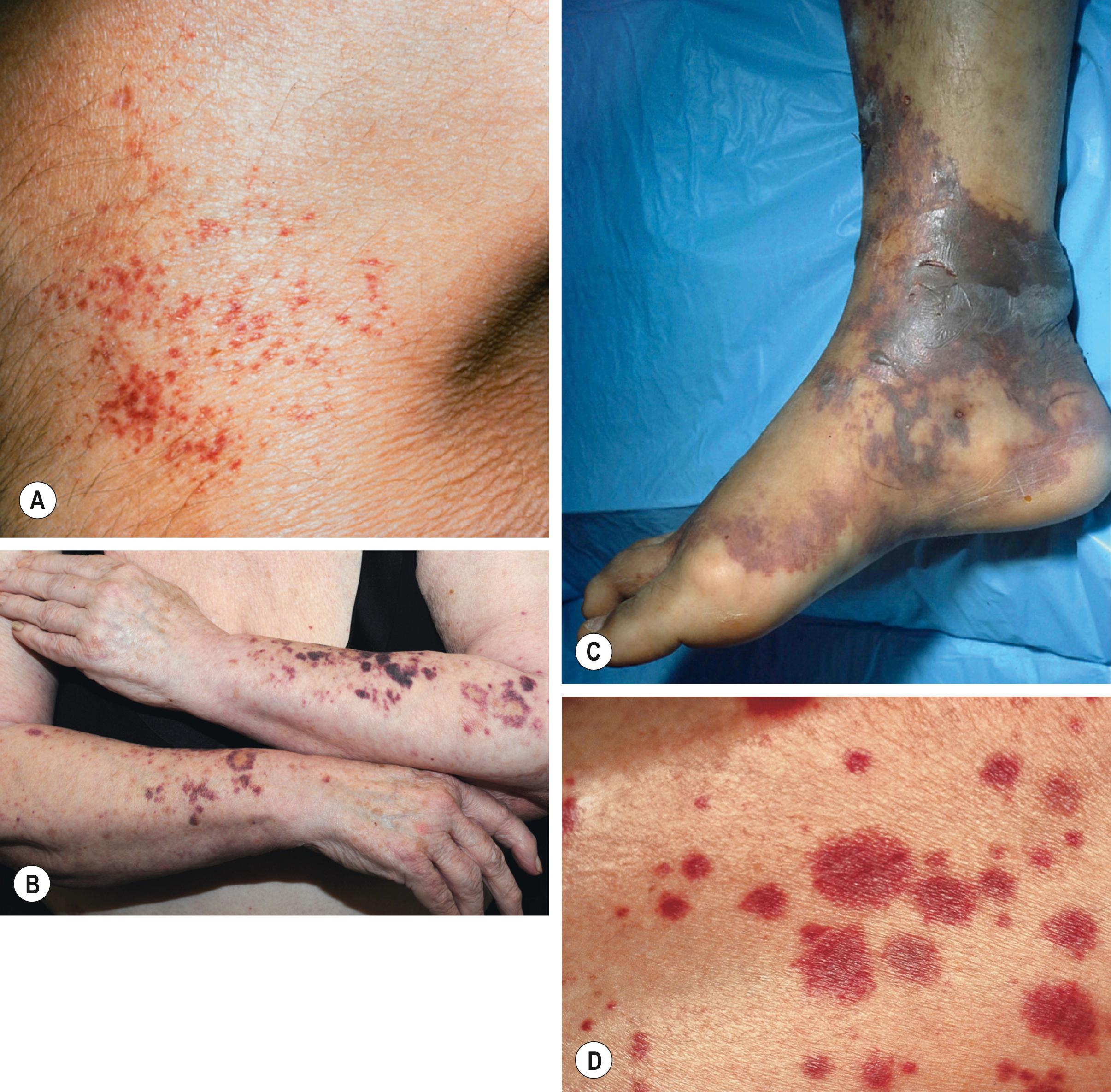
Ecchymoses : usually >1 cm and macular with round/oval to slightly irregular borders, and typically have an element of trauma in their pathogenesis (see Table 18.1 ; Fig. 18.1 B); a greater volume of hemorrhage leads to a hematoma , which is palpable
Retiform purpura : reticulated, branching or stellate morphology, which reflects occlusion of the vessels that produce the livedo reticularis pattern (see Ch. 87 ; Tables 18.2 and 18.3 ; Figs 18.1C and 18.2–18.9 )
| Disorder | Major features |
|---|---|
| Microvascular platelet plugs | |
| Heparin-induced thrombocytopenia (HIT) | |
| Thrombocytosis due to myeloproliferative disorders |
|
| Paroxysmal nocturnal hemoglobinuria |
|
| Thrombotic thrombocytopenic purpura (TTP) ± hemolytic uremic syndrome (HUS) |
|
| Cold-related agglutination | |
| Cryoglobulinemia type I > cryofibrinogenemia † |
|
| Altered coagulation | |
| Antiphospholipid syndrome |
|
| Protein C or S deficiency/dysfunction |
|
| “Vascular coagulopathy” | |
| Livedoid vasculopathy |
|
| Degos disease (malignant atrophic papulosis) |
|
| Sneddon syndrome – often in setting of antiphospholipid syndrome or adenosine deaminase 2 deficiency (± associated polyarteritis nodosa) |
|
| Embolization and/or crystal deposition | |
| Cholesterol emboli (“warfarin blue toe syndrome”) |
|
| Other sources of emboli and/or crystal deposition | |
| Reticulocyte/red blood cell occlusion (e.g. in sickle cell disease or severe malaria) | |
| Organisms within vessels (usually in immunocompromised patients) | |
| Ecthyma gangrenosum |
|
| Vessel-invasive fungi |
|
| Disseminated strongyloidiasis |
|
| Lucio phenomenon |
|
| Other causes | |
| Vasculitis (usually involving small and medium-sized vessels) |
|
| Calciphylaxis |
|
| Necrotic spider bite reaction |
|
| Intravascular lymphoma |
|
∗ Less common with low-molecular-weight heparin (≤1%) than unfractionated heparin; a transient decrease in the platelet count can also occur within the first 2 days of heparin therapy due to its direct effects on platelet activation.
† May be an incidental finding in hospitalized patients; cold agglutinins rarely lead to acrocyanosis or purpura.
∗∗ Skin lesions on the hands and feet associated with subacute endocarditis are more likely to be tender red-purple papules due to immune complex deposition (“Osler nodes”),than purpuric macules representing septic emboli (“Janeway lesions”; more common in acute endocarditis).
‡ Cutaneous microthrombi and superficial thrombophlebitis have also been described.
| Type | Composition | Associations | Pathophysiology | Clinical manifestations |
|---|---|---|---|---|
| I | Monoclonal IgM or IgG >> IgA | Plasma cell dyscrasias, lymphoproliferative disorders | Vascular occlusion | Retiform purpura (often acral; Fig. 18.3 ), gangrene, acrocyanosis, Raynaud phenomenon |
| II ∗∗ | Monoclonal IgM ∗ (>IgG ∗ ) against polyclonal IgG | HCV, HIV, autoimmune connective tissue diseases, lymphoproliferative disorders | Vasculitis | Palpable purpura, arthralgias, peripheral neuropathy, glomerulonephritis |
| III ∗∗ | Polyclonal IgM ∗ against polyclonal IgG |
∗ Typically have rheumatoid factor activity (i.e. are directed against the Fc portion of IgG).
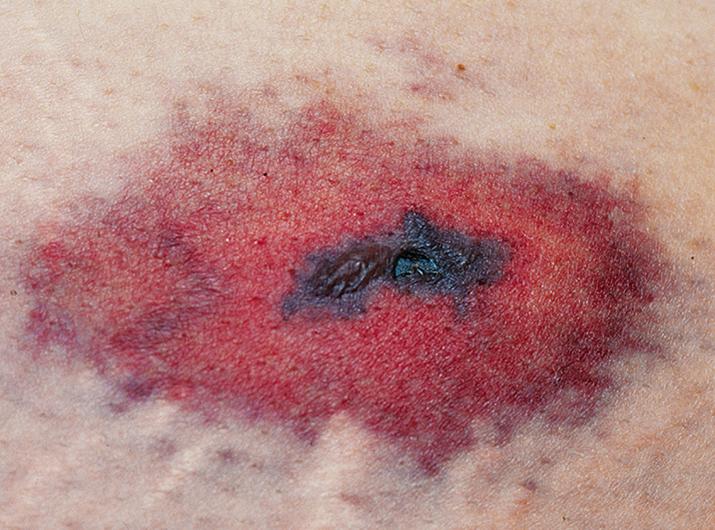
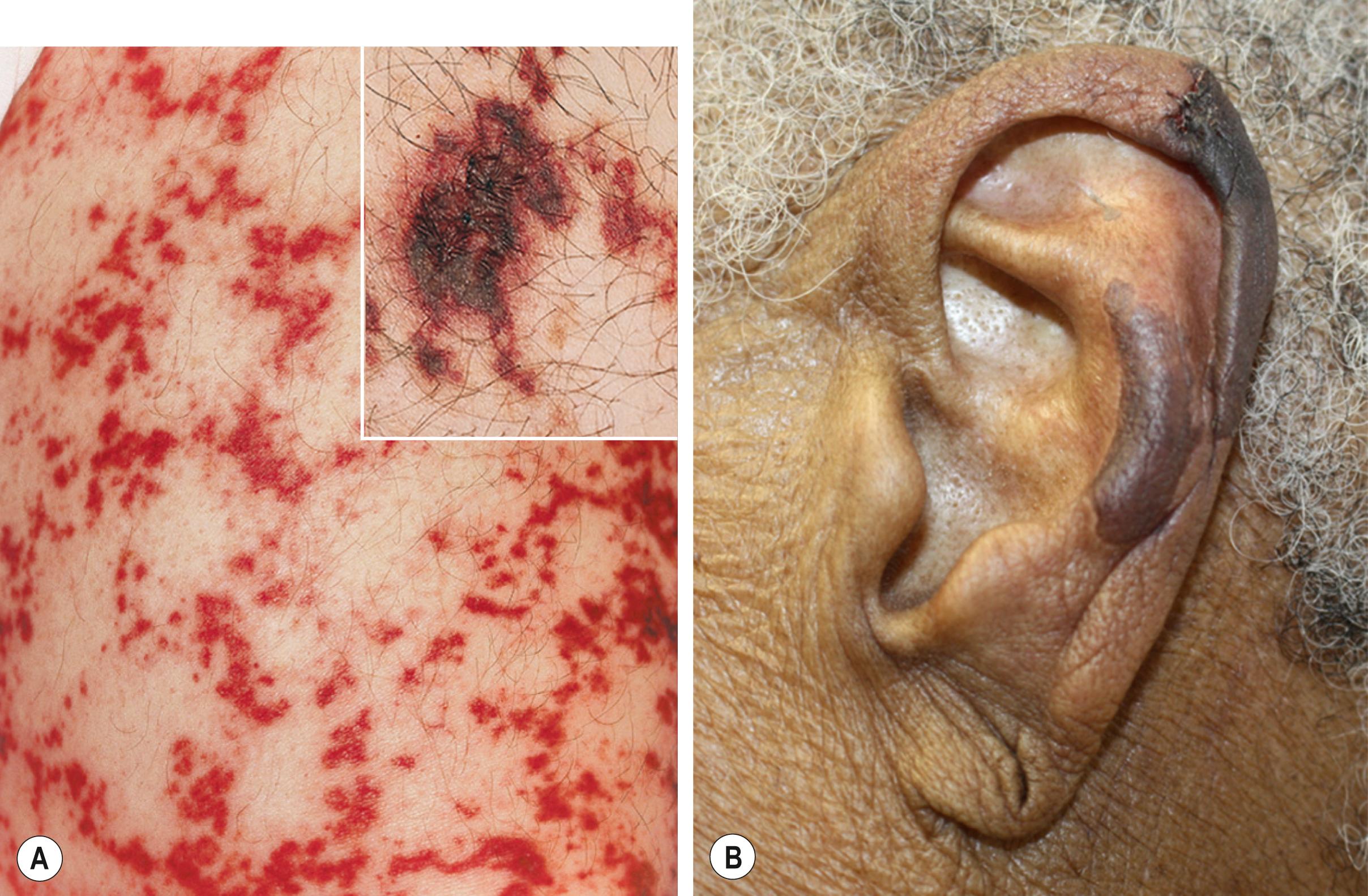
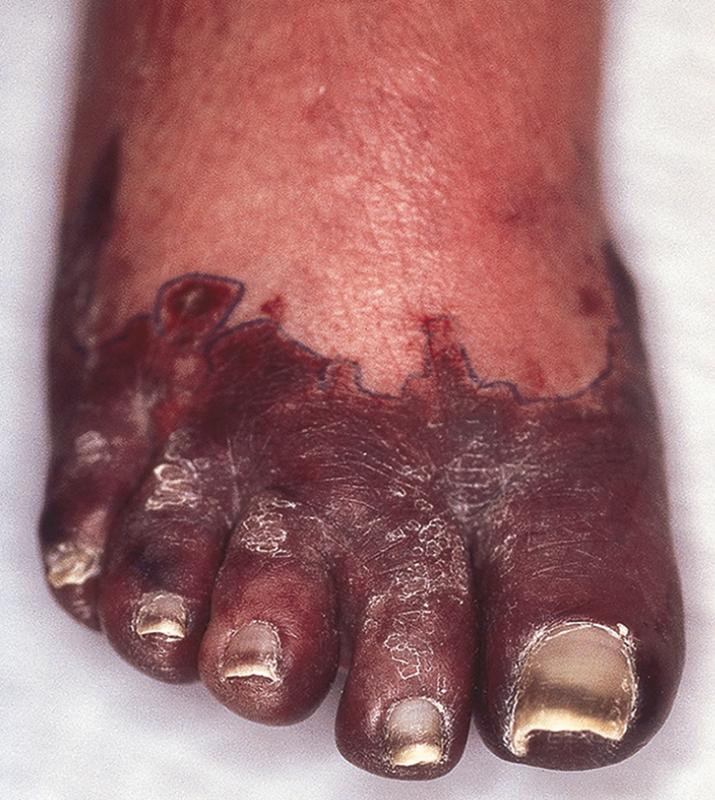
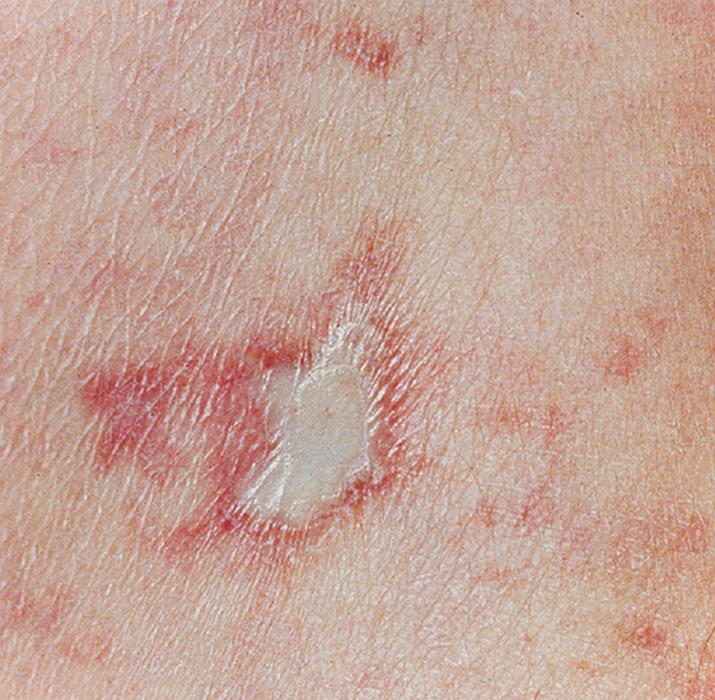
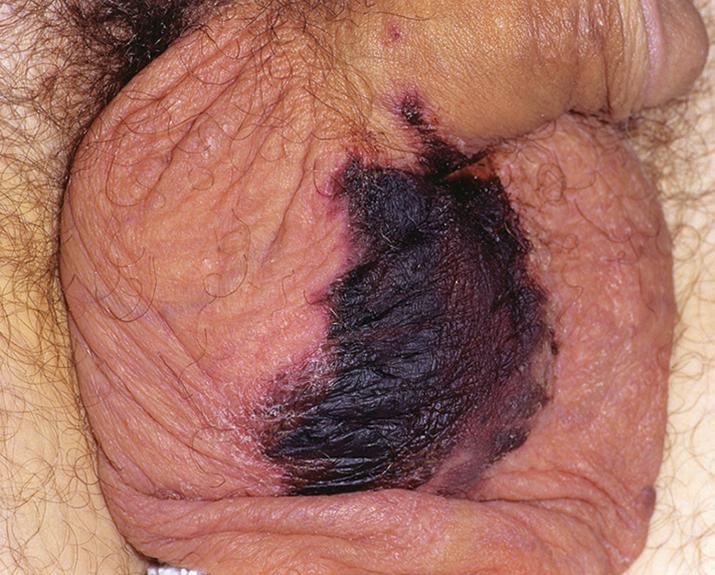
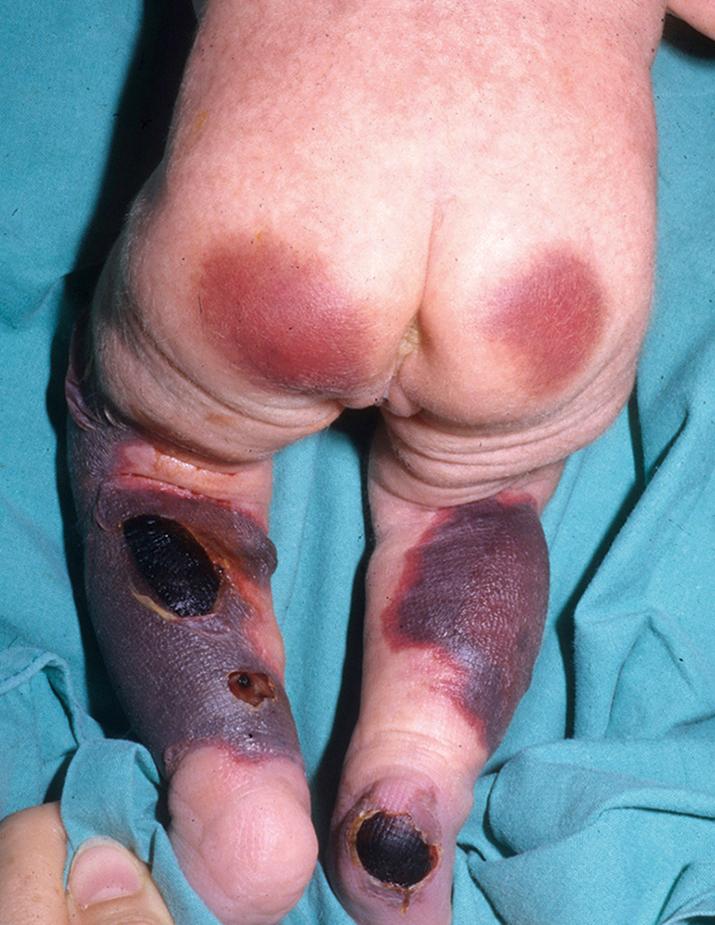
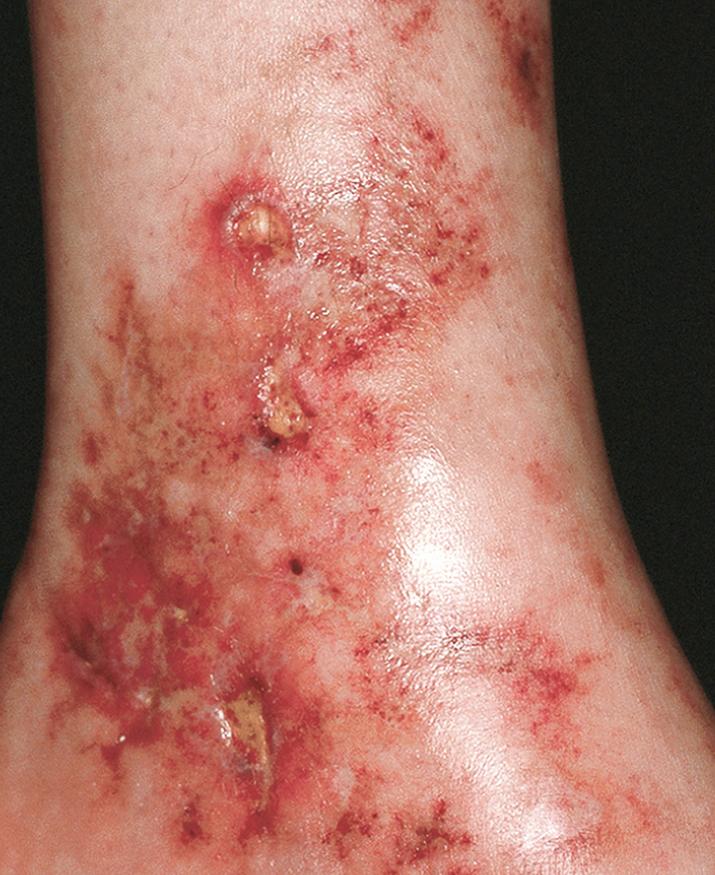
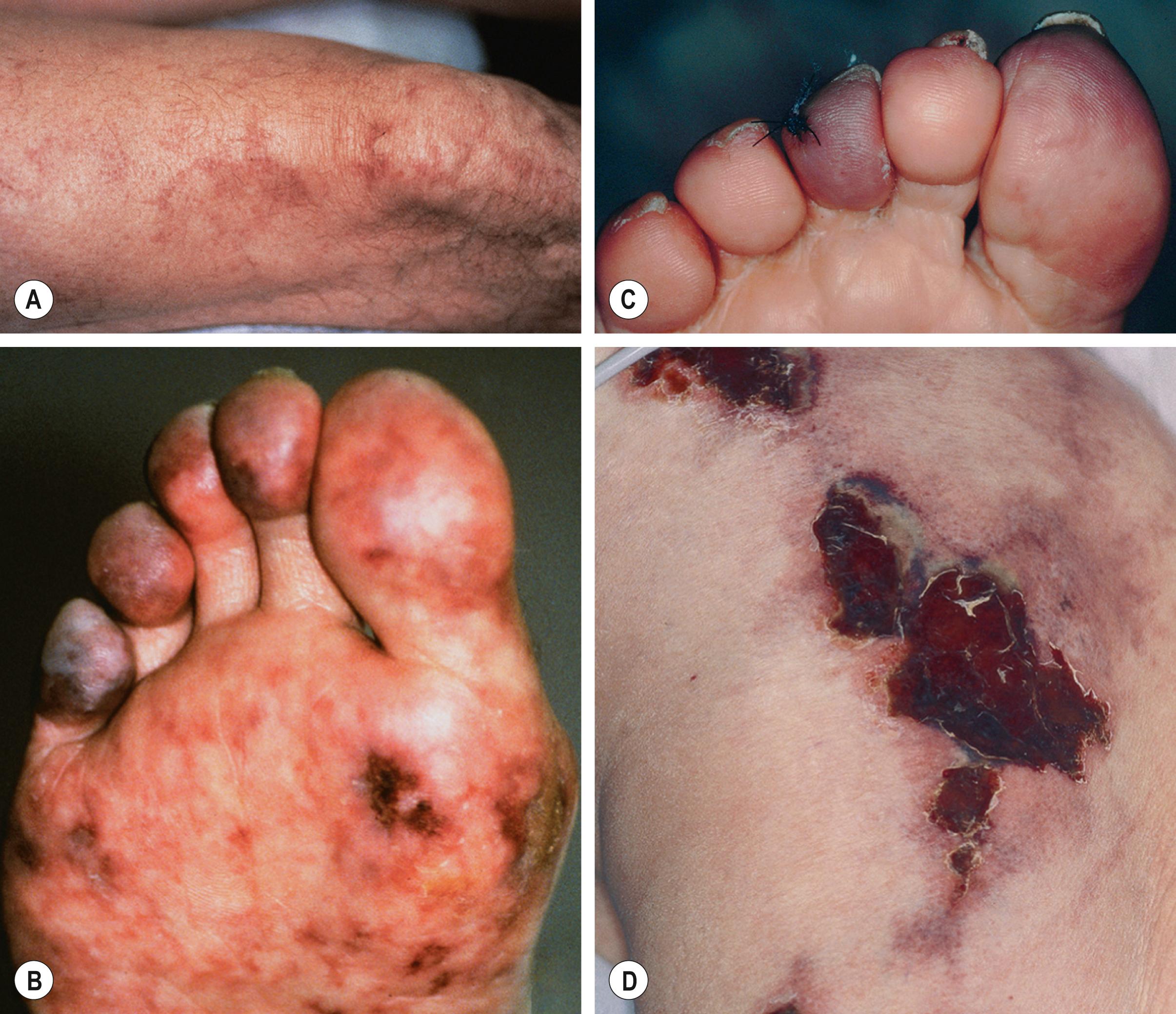
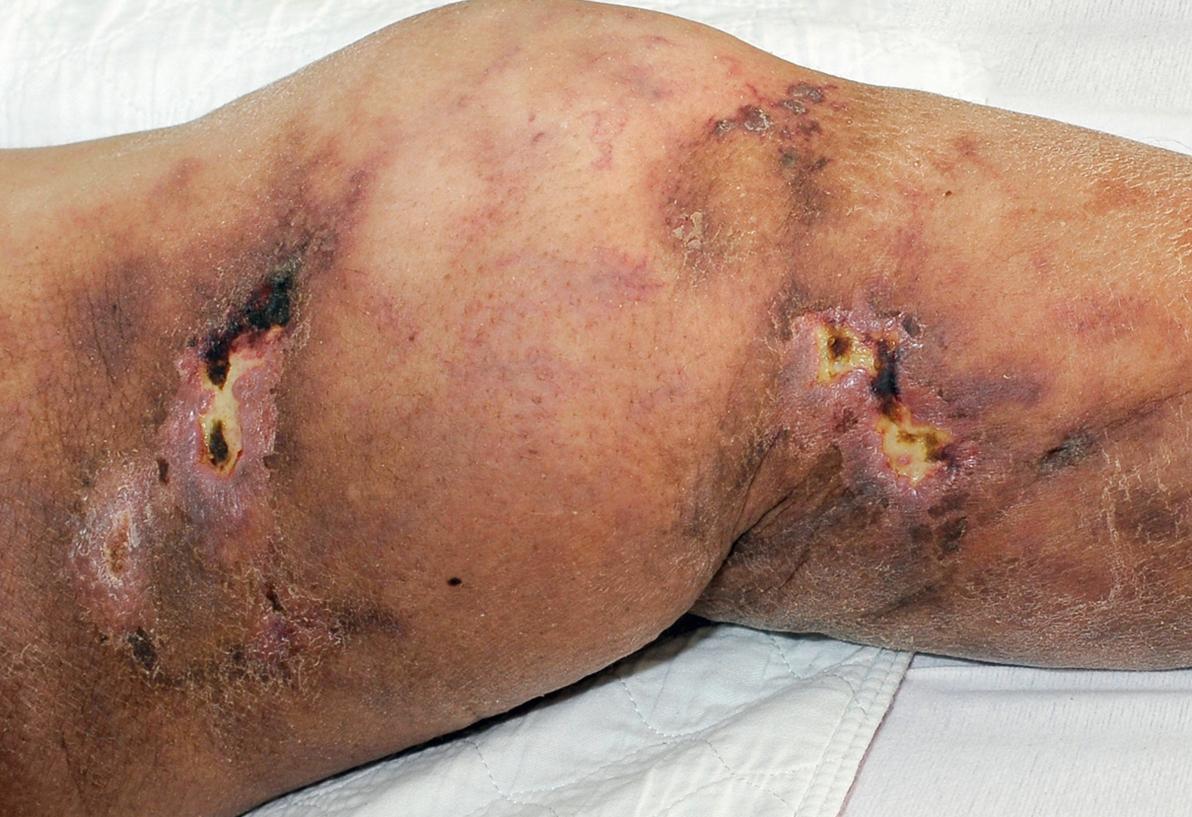
Classic “palpable purpura” : round red-purple papules that are occasionally targetoid, with a component of blanching erythema in early lesions; represents the most common presentation of cutaneous small vessel vasculitis (see Ch. 19 ; Fig. 18.1 D)
A biopsy specimen can be helpful in determining the etiology of a purpuric eruption, e.g. whether there is vascular occlusion with minimal inflammation or vasculitis (inflammation and fibrinoid necrosis of vessel walls). Because secondary changes of vasculitis may be seen when an older lesion of microvascular occlusion is sampled, and likewise a late lesion of vasculitis may have minimal residual inflammation, it is preferable to choose a well-developed but relatively early lesion (e.g. 24–48 hours old).
Become a Clinical Tree membership for Full access and enjoy Unlimited articles
If you are a member. Log in here